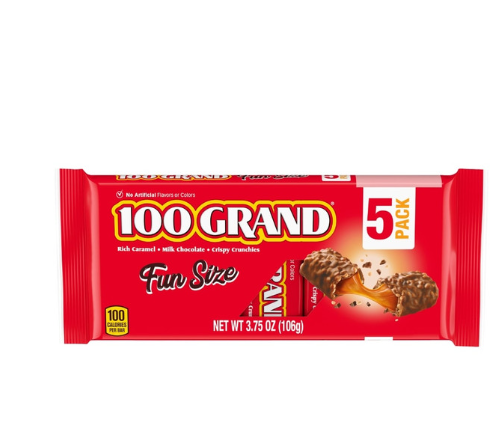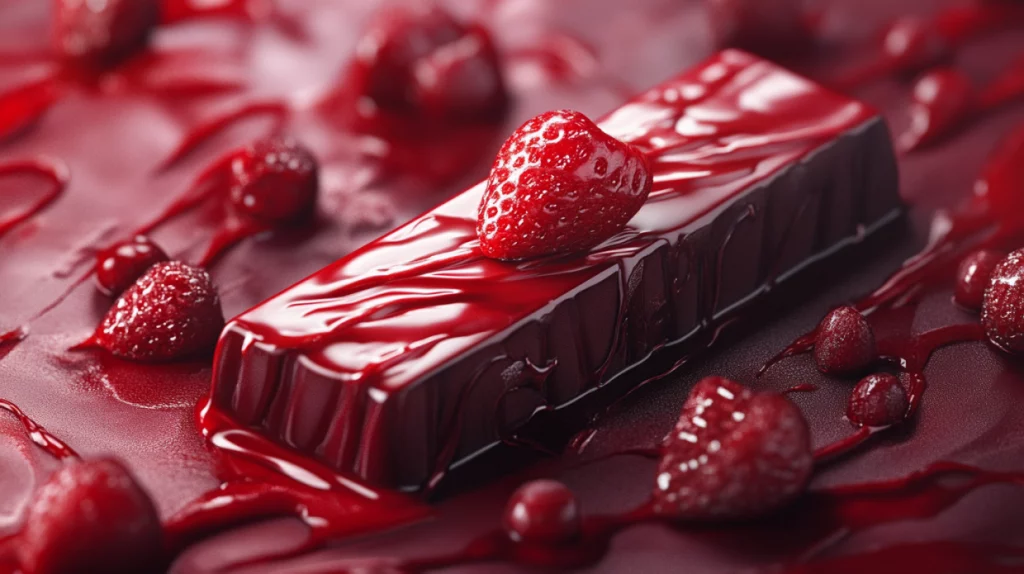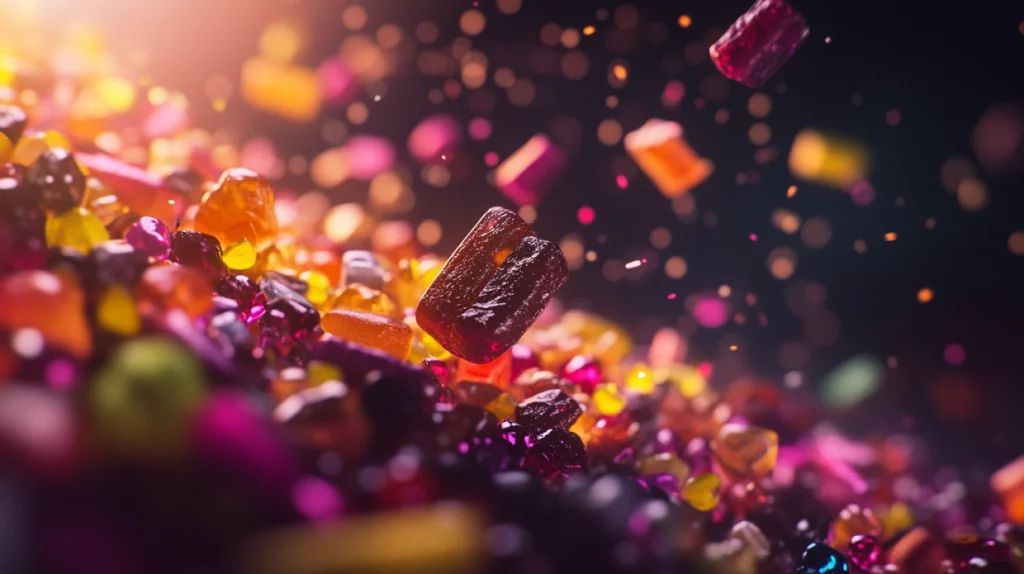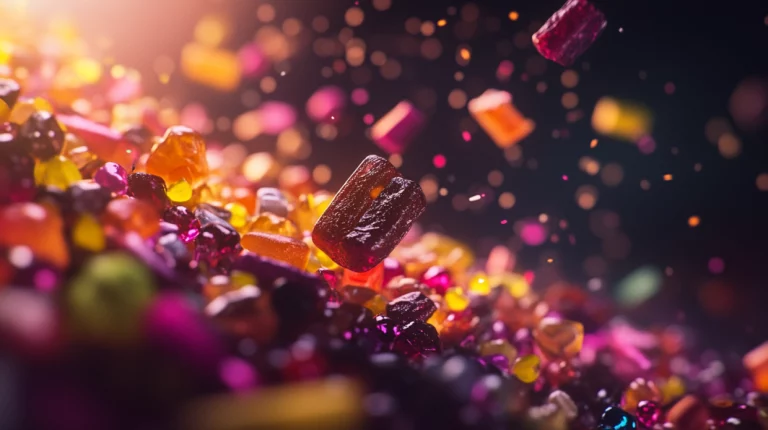
100 Grand Chocolate Bar, Fun Size, 5 Pack
- Rich caramel. Milk chocolate. Crispy crunchies. No artificial flavors or colors. 100 calories per bar.
A Rich History of Crispy, Caramel Decadence in Every Bite
In the vast landscape of American candy, few treats have maintained their appeal quite like the 100 Grand chocolate bar. With its distinctive crunch, gooey caramel, and milk chocolate coating, this candy bar has carved out its own special niche in the hearts (and taste buds) of chocolate lovers across generations. Today, I’m diving deep into everything you could possibly want to know about this iconic chocolate-caramel creation—from its intriguing history to its unique composition, nutritional profile, and even creative culinary applications. Whether you’re a lifelong fan or a curious newcomer to the 100 Grand experience, prepare for a rich exploration of one of America’s most beloved chocolate treasures.
The Anatomy of a 100 Grand: What’s Inside That Iconic Wrapper?
The 100 Grand bar achieves its distinctive character through a carefully crafted combination of three key components. At its core lies a foundation of crisped rice—light, airy, and perfectly crunchy. This crispy foundation is then generously enrobed in rich, gooey caramel that stretches delightfully with each bite. The final touch is a smooth milk chocolate coating that encases the entire creation, creating that perfect chocolate-to-caramel-to-crisp ratio that fans have come to adore.
What makes the 100 Grand particularly special is the textural interplay between these three elements. The gentle snap of the crisped rice provides a satisfying counterpoint to the stretchy, chewy caramel, while the chocolate coating melts at body temperature, creating a multi-sensory experience that unfolds with each bite. This thoughtful composition creates a candy bar that’s simultaneously substantive and light, indulgent yet somehow less dense than many of its contemporaries in the chocolate bar aisle.
The quality of ingredients also contributes to the bar’s enduring popularity. The milk chocolate offers just the right level of sweetness without overwhelming the palate, while the caramel delivers that buttery, vanilla-tinged flavor that caramel enthusiasts crave. The crisped rice maintains its texture even when surrounded by caramel, ensuring that signature crunch from first bite to last.
Behind the Brand: Nestlé’s Candy Empire and the 100 Grand
Today, the 100 Grand chocolate bar is proudly produced by Nestlé, one of the world’s largest food and beverage corporations. Nestlé’s extensive candy portfolio includes other beloved brands like Butterfinger, Crunch, and Baby Ruth in the United States. However, the 100 Grand has a unique place in this lineup due to its distinctive texture combination and enduring appeal across multiple generations.
Nestlé maintains strict quality control standards for the production of 100 Grand bars, ensuring consistency in both taste and texture. The manufacturing process requires careful temperature control, particularly for the caramel component, which must have precisely the right viscosity to achieve that perfect stretch when bitten into. Similarly, the chocolate coating must be tempered correctly to achieve the proper shine and snap.
The company’s global scale allows for widespread distribution of the 100 Grand bar, though as we’ll discuss later, availability varies significantly by region, with the strongest presence remaining in the North American market. Under Nestlé’s stewardship, the 100 Grand has maintained its classic formulation while occasionally experimenting with limited edition variations over the years.
A Currency of Sweetness: The Fascinating History of the 100 Grand Bar
The story of the 100 Grand chocolate bar begins in 1964, though it wasn’t always known by its current name. Originally, the candy bar was launched by Nestlé as the “$100,000 Bar,” a name chosen to evoke a sense of richness and luxury during an era when that sum represented extraordinary wealth. The name was inspired by popular game shows of the time, particularly “The $64,000 Question,” which captured America’s imagination with the prospect of life-changing prize money.
In 1986, the candy underwent a name change to its current moniker, “100 Grand,” maintaining the monetary association while adopting a snappier, more modern title. This rebranding effort coincided with a renewed marketing push that helped introduce the candy to a new generation of consumers.
Throughout its history, the 100 Grand bar has remained remarkably consistent in its formulation, with the core combination of crisped rice, caramel, and milk chocolate remaining largely unchanged for nearly six decades. This consistency has helped build brand loyalty across generations, with parents introducing their children to their favorite childhood treat.
The advertising history of the 100 Grand is particularly noteworthy. In the 1970s and 1980s, memorable television commercials featured the tagline “That’s rich!” which played on the dual meaning of richness in both flavor and monetary value. More recent marketing campaigns have continued to leverage the money-themed name with playful promotions and slogans like “Experience the rich life.”
One particularly famous marketing stunt occurred in the early 2000s when a radio station ran a contest offering “100 Grand” to a lucky listener. When the winner was presented with a 100 Grand chocolate bar rather than $100,000 in cash, the resulting controversy generated significant publicity for the brand, though the station ultimately had to provide a real monetary prize to settle the ensuing lawsuit.
Nutritional Breakdown: What’s the Caloric Cost of Indulgence?
For many chocolate enthusiasts, the 100 Grand bar represents an occasional indulgence rather than a dietary staple, and understanding its nutritional profile helps consumers make informed choices. A standard 1.5-ounce (42.5g) 100 Grand bar contains approximately 190-200 calories, which is actually moderate compared to many similar-sized chocolate bars on the market.
The carbohydrate content is where the numbers start to climb. Each standard bar contains about 30-32 grams of carbohydrates, with the majority coming from sugars. A typical 100 Grand bar contains around 22 grams of sugar, which represents nearly 50% of the recommended daily limit for added sugars according to many nutritional guidelines. This sugar content comes primarily from the chocolate coating and caramel filling.
Fat content sits at approximately 7-8 grams per bar, with about 5 grams being saturated fat derived mainly from the cocoa butter in the chocolate coating. The protein content is minimal, at just 1-2 grams per standard bar.
From a micronutrient perspective, the 100 Grand bar isn’t designed to be a significant source of vitamins or minerals, though the chocolate component does provide small amounts of iron and calcium. The sodium content is moderate at approximately 95-100mg per bar.
For those monitoring allergens, it’s worth noting that the 100 Grand bar contains milk ingredients from the chocolate and may be manufactured on equipment that also processes other allergens. However, the standard formulation is peanut-free, making it an option for those with specific peanut allergies (though those with severe allergies should always check current manufacturing practices).
The Taste Experience: What Makes the 100 Grand Uniquely Satisfying?
The flavor profile of the 100 Grand bar is characterized by a harmonious balance of sweetness from multiple sources. The milk chocolate exterior provides the first note—smooth, creamy, and with that characteristic dairy richness that defines American milk chocolate. This gives way to the buttery, vanilla-forward caramel that forms the heart of the bar’s flavor identity.
The caramel in a 100 Grand offers a particular delight because it hits the perfect middle ground in the caramel spectrum—neither too firm nor too runny. It delivers that satisfying stretch when pulled away from the bar, creating what fans often describe as the “caramel pull”—an essential part of the 100 Grand eating experience.
Beneath the caramel, the crisped rice provides a subtle toasted grain flavor that adds complexity to the overall profile. This element also introduces a textural counterpoint that prevents the sweetness from becoming overwhelming. The interplay of textures—the snap of chocolate, the stretch of caramel, and the crunch of rice crisps—creates a multi-dimensional eating experience that distinguishes the 100 Grand from other caramel-chocolate combinations.
What’s particularly noteworthy about the 100 Grand’s taste is how the proportions of each component create such a distinctive eating experience. The ratio of chocolate to caramel to crisp has been carefully calibrated over decades, resulting in a balance that candy enthusiasts instantly recognize as uniquely “100 Grand.”
Availability and Purchasing: Where to Find Your 100 Grand
In the United States, the 100 Grand bar enjoys widespread distribution and can be found in most major grocery stores, pharmacies, convenience stores, and mass merchandisers. It’s a standard offering in the candy aisle alongside other Nestlé products and competing chocolate bars. The typical price point ranges from $1.00 to $1.50 for a standard single bar, though prices vary by retailer and region.
For those who prefer to buy in bulk, many warehouse clubs and online retailers offer multi-packs of 100 Grand bars, often at a lower per-unit cost. These multi-packs are particularly popular during holiday seasons when the bars may be given out for Halloween or included in holiday gift baskets.
Online availability has expanded significantly in recent years. Major e-commerce platforms like Amazon, Walmart.com, and Target.com regularly stock various package sizes of 100 Grand bars. Specialty candy websites also offer the product, sometimes alongside harder-to-find limited editions or seasonal variations.
Internationally, the availability of 100 Grand bars is much more limited. The product has its strongest presence in the North American market, with some limited distribution in select international markets. For chocolate enthusiasts outside the United States, specialty import shops or international food sections in larger supermarkets occasionally carry 100 Grand bars, typically at premium prices reflecting import costs. Some international candy enthusiasts rely on specialty online retailers that ship American candies worldwide, though shipping costs can be substantial.
Global Reach: Is the 100 Grand an International Sensation?
Unlike some American candy bars that have achieved global ubiquity, the 100 Grand remains primarily a North American phenomenon. Its strongest presence is in the United States and Canada, where it has been a staple of the candy landscape for generations. This regional focus is partly due to Nestlé’s different product portfolios in different global markets.
In Europe, Nestlé markets a different range of chocolate bars, many of which have their own long-established histories in those regions. The company typically tailors its offerings to local tastes and traditions rather than attempting to standardize its candy portfolio globally. As a result, the 100 Grand hasn’t been heavily marketed or widely distributed in European markets.
In Asia and the Pacific regions, the 100 Grand similarly has limited presence, with Nestlé focusing on other products more aligned with regional preferences. In these markets, chocolate-caramel combinations often feature different textural elements than the crisped rice found in 100 Grand.
For international travelers or expatriates seeking a taste of this American classic, “American candy” specialty shops in major international cities occasionally stock 100 Grand bars, and some global e-commerce platforms facilitate cross-border shipping of confectionery products. However, import regulations, shipping conditions for temperature-sensitive products, and costs can create barriers to international availability.
This primarily regional focus has contributed to the 100 Grand’s status as something of an American cultural icon—a candy bar that represents a distinctly American approach to chocolate confectionery that emphasizes textural contrast and generous proportions.
What’s in a Name? The Story Behind “100 Grand”
The unique monetary-themed name of the 100 Grand bar has been central to its identity since its inception. When first introduced in 1964 as the “$100,000 Bar,” the name was chosen to evoke wealth, luxury, and indulgence. This was during an era when game shows offering large cash prizes were capturing the public imagination, and $100,000 represented a truly life-changing sum of money.
The name suggested to consumers that the chocolate bar offered a rich, premium experience—a taste of luxury accessible for just a few cents. This clever marketing approach positioned the candy bar as an affordable indulgence that made consumers feel like they were treating themselves to something special.
When the name was shortened to “100 Grand” in 1986, it maintained this association with wealth while adopting a snappier, more contemporary feel. The rebranding coincided with shifts in American slang, where “grand” was commonly understood to mean a thousand dollars. Thus, “100 Grand” clearly communicated “$100,000” in a more colloquial, approachable way.
Throughout its history, advertising for the bar has played on this monetary theme with slogans like “That’s rich!” which cleverly referenced both the flavor profile and the name’s wealth association. The distinctive name has also inspired numerous marketing promotions over the years, from contests to limited editions with money-themed packaging.
The name has proven to be a durable and distinctive brand asset, setting the 100 Grand apart in a crowded candy market and giving it a unique identity that transcends the mere description of its ingredients. Few other candy bars have names that so cleverly blend aspiration, humor, and product positioning.
Sweet Nutrition Facts: The Complete Dietary Profile
For those monitoring their nutritional intake more closely, here’s a comprehensive breakdown of what you’ll find in a standard 1.5-ounce (42.5g) 100 Grand bar:
• Calories: 190-200
• Total Fat: 7-8g
• Saturated Fat: 5g
• Trans Fat: 0g
• Cholesterol: 5mg
• Sodium: 95-100mg
• Total Carbohydrates: 30-32g
• Dietary Fiber: Less than 1g
• Total Sugars: 22g
• Added Sugars: 22g
• Protein: 1-2g
From a micronutrient perspective, the 100 Grand bar is not a significant source of most vitamins and minerals, though it does contain small amounts of calcium (2% of Daily Value) and iron (2% of Daily Value).
It’s worth noting that these values may vary slightly with manufacturing adjustments and should be verified on current packaging for the most accurate information. For those seeking to incorporate occasional treats into a balanced diet, the 100 Grand bar falls into a middle range of chocolate bars in terms of caloric density and sugar content.
When compared to other similar chocolate-caramel combination bars, the 100 Grand often fares slightly better in terms of total calories, likely due to the inclusion of crisped rice, which adds volume with relatively fewer calories than solid chocolate or caramel would provide in the same space.
Fascinating Trivia: Fun Facts About the 100 Grand
The 100 Grand bar has accumulated some interesting trivia and cultural moments throughout its nearly six-decade history:
• The 100 Grand bar briefly appeared in the 1994 film “Dumb and Dumber,” where it was used as part of a visual gag playing on its monetary name.
• During the 1970s, the bar was featured in commercials where people would dramatically say “That’s rich!” after taking a bite, creating one of the more memorable candy slogans of the era.
• The previously mentioned radio station prank in the early 2000s, where a listener thought they had won $100,000 but received a candy bar instead, generated national headlines and significant publicity for the brand.
• In candy sales rankings, the 100 Grand consistently performs well but rarely reaches the very top tier dominated by bars like Snickers, Reese’s, and M&M’s. It maintains what industry insiders often call a “strong cult following.”
• The wrapper design has remained remarkably consistent over decades, featuring the distinctive red background with the 100 Grand name prominently displayed—a testament to the power of consistent brand recognition.
• In 2005, a limited edition “Dark” version was released featuring dark chocolate instead of milk chocolate, though it wasn’t continued as a permanent offering.
• The crisped rice in the 100 Grand bar is similar to, but distinct from, the crisped rice found in Nestlé’s Crunch bar, being specifically formulated to maintain crispness when surrounded by caramel.
• According to candy historian interviews, the 100 Grand bar was one of the first mainstream candy bars to successfully combine three distinct textural elements (crispy, chewy, and smooth), creating a template that many later candies would follow.
Caramel Credentials: The Stretchy Heart of the Bar
The caramel component is arguably the defining feature of the 100 Grand bar, and it’s crafted with particular specifications that set it apart from other caramel-containing candies. The caramel in a 100 Grand bar achieves the perfect balance between stretch and chew, creating that signature pull when bitten into while still being soft enough to eat comfortably.
This caramel is made through a careful cooking process where sugar, corn syrup, milk products, and fats are heated to precise temperatures. The exact formulation is a closely guarded secret, but candy experts note that the 100 Grand caramel has a distinctive buttery quality with vanilla notes that complement the chocolate coating.
The thickness and consistency of the caramel layer are calibrated to work in harmony with the crisped rice center. It’s applied in a way that allows it to seep partially into the crisped rice matrix without fully saturating it, maintaining the crucial textural contrast between components.
For caramel enthusiasts, the 100 Grand offers a particularly satisfying experience because of the generous caramel-to-chocolate ratio. Unlike some chocolate-caramel combinations where the caramel is merely an accent, in the 100 Grand, the caramel is a co-starring component that makes its presence known in every bite.
The specific consistency of this caramel also contributes to the bar’s structural integrity. It’s firm enough at room temperature to maintain the bar’s shape, yet soft enough to yield pleasantly when bitten into. This technical achievement represents one of the candy engineering successes that has helped the 100 Grand maintain its popularity across decades.
Textural Symphony: The Multi-Dimensional Eating Experience
The textural complexity of the 100 Grand bar is what many confectionery experts consider its defining characteristic. Few mainstream candy bars offer such a distinctive combination of textures in a single bite. This textural variety creates what food scientists call a dynamic sensory experience—one that changes and evolves as you eat it.
The exterior chocolate shell provides the initial sensation—a thin layer that offers just enough resistance before yielding to reveal the layers beneath. This chocolate coating melts smoothly on the tongue, creating a creamy foundation for the other textures to play against.
The middle caramel layer delivers that characteristic chew and stretch—a slightly resistant, pleasant pull that exercises the jaw just enough to feel satisfying without becoming difficult to eat. The elasticity of this caramel creates moments of textural anticipation as it stretches before yielding.
At the center, the crisped rice matrix provides a delicate crunch that contrasts beautifully with the surrounding softness. These crispy elements shatter gently between the teeth, creating a subtle audio component to the eating experience that sensory researchers have identified as contributing significantly to satisfaction levels.
What makes this combination particularly successful is the way these textures complement rather than compete with each other. The crisped rice maintains its integrity even when surrounded by caramel, and the chocolate coating protects the integrity of the entire structure until the moment of consumption.
This textural interplay creates what psychologists call “sensory engagement”—a state where multiple sensory systems are simultaneously activated, increasing overall pleasure and satisfaction. For many 100 Grand enthusiasts, it’s this textural symphony, rather than any particular flavor note, that creates such strong brand loyalty.
Culinary Applications: Beyond the Wrapper
While most 100 Grand bars are enjoyed in their original form, straight from the wrapper, creative home cooks and professional chefs have found numerous ways to incorporate them into recipes. The bar’s combination of chocolate, caramel, and crunch makes it a versatile ingredient in dessert applications.
One of the most popular uses is chopping 100 Grand bars into pieces and incorporating them into cookie dough, creating cookies with pockets of caramel and chocolate. The crisped rice elements provide textural interest that distinguishes these cookies from those made with solid chocolate pieces.
Ice cream applications are another natural fit. Chopped 100 Grand pieces can be mixed into homemade or softened store-bought ice cream, creating a custom flavor reminiscent of commercial caramel-chocolate-crunch varieties but with the distinctive 100 Grand character. Some ice cream shops have even created signature flavors featuring 100 Grand pieces.
In baking, 100 Grand bars can be used as unexpected filling elements in brownies or blondies. When placed in the center of the batter before baking, they create a gooey caramel center that adds excitement to standard baked goods.
For more elaborate desserts, 100 Grand pieces have been used as garnishes for cakes and cupcakes, pressed into the frosting to add visual interest and textural contrast. Some creative bakers have even melted them down (though this sacrifices the textural elements) to create ganache-like fillings for layer cakes.
The combination of flavors in the 100 Grand has also inspired completely original desserts that mimic its profile with elevated ingredients—high-end confections featuring artisanal caramel, premium chocolate, and house-made crisped rice elements that pay homage to the beloved candy bar while transforming it into a gourmet experience.
Allergy Considerations: Navigating Dietary Restrictions
For those with dietary restrictions or allergies, it’s important to understand the allergen profile of the 100 Grand bar. The standard formulation contains milk ingredients, making it unsuitable for those with dairy allergies or those following a vegan lifestyle.
For individuals with peanut allergies, there’s better news—the standard 100 Grand bar does not contain peanuts or peanut products in its ingredients. However, like many commercial confections, it is typically manufactured in facilities that also process products containing peanuts and other tree nuts. This creates potential for cross-contamination, which Nestlé acknowledges on its packaging with “may contain” warnings.
The bar contains wheat-derived ingredients in the crisped rice component, making it inappropriate for those with celiac disease or wheat sensitivities. It also contains soy ingredients, typically in the form of soy lecithin, which is used as an emulsifier in the chocolate coating.
For those with corn allergies, it’s worth noting that the caramel component typically contains corn syrup as a key ingredient. Individuals with egg allergies can generally consume 100 Grand bars, as eggs are not used in their production.
Nestlé’s labeling practices are comprehensive and in compliance with food allergen labeling laws, providing clear information about both intentional ingredients and potential cross-contamination risks. However, formulations can change over time, so consumers with severe allergies should always check current packaging for the most up-to-date information.
Size Variations: From Fun Size to King Size
While the standard 1.5-ounce (42.5g) bar is the most recognized format for the 100 Grand, Nestlé produces several size variations to suit different consumption occasions and retail environments.
The “Fun Size” version is particularly popular during Halloween season. These miniature versions weigh approximately 0.31 ounces (8.8g) each and are typically sold in bags containing multiple pieces. Each Fun Size bar contains around 40 calories, making them a more portion-controlled option for those seeking a smaller indulgence.
At the other end of the spectrum, “King Size” 100 Grand bars offer a more substantial treat. These larger formats typically contain two pieces within a single package, with a total weight of approximately 3.0 ounces (85g). The dual-piece format allows for sharing or saving half for later, a packaging approach that has become increasingly common in the candy industry as manufacturers respond to concerns about portion size.
For bulk candy displays and movie theater concessions, individually wrapped miniature 100 Grand bars are sometimes available. These are similar in size to the Halloween Fun Size versions but packaged for individual sale rather than in multi-piece bags.
During holiday seasons, particularly Christmas and Easter, specially packaged 100 Grand products sometimes appear, including novelty shapes or seasonal packaging. These maintain the same fundamental formulation but offer a festive presentation appropriate to the holiday.
For commercial food service applications, Nestlé occasionally produces larger format blocks or sheets of 100 Grand that can be cut to specification for use in restaurant desserts or bakery applications, though these are not typically available in consumer retail channels.
Ordering Online: Digital Pathways to Chocolate Satisfaction
The digital revolution has transformed how consumers access their favorite treats, including the 100 Grand bar. For those unable to find the product locally or seeking convenience, numerous online purchasing options exist.
Major e-commerce platforms like Amazon, Walmart.com, and Target.com regularly stock various package sizes of 100 Grand bars. These range from individual bars to bulk packages containing dozens of units. The advantage of these platforms is their reliable shipping infrastructure and customer service policies, though prices may sometimes be higher than in-store equivalents.
Specialty candy websites offer another avenue for online purchase. Sites like CandyWarehouse, OldTimeCandy, and similar retailers often stock not only standard 100 Grand products but occasionally limited editions or packaging variations that might not be widely available in physical retail. These sites frequently cater to nostalgic candy enthusiasts or those seeking specific formats for gifts or events.
Grocery delivery services have expanded the online availability of 100 Grand bars. Services like Instacart, Shipt, and grocery-specific delivery platforms allow consumers to order 100 Grand bars alongside their regular grocery items, typically with same-day delivery options in many markets.
For international consumers seeking American candy products, several specialized exporters ship U.S. confectionery items worldwide, though shipping costs and potential customs duties can add significantly to the overall price. These services are particularly valuable for expatriates or international fans who can’t access the product through local retail channels.
When ordering chocolate products online, it’s important to consider shipping conditions, particularly during warmer months when temperature control becomes crucial. Many specialized candy retailers offer insulated packaging and cold packs during summer shipping to prevent melting, though this typically adds to shipping costs.
Heat Stability: The Melting Point Matters
Like all chocolate products, the 100 Grand bar has specific heat sensitivity that affects both storage and consumption. The milk chocolate coating has a melting point of approximately 86-90°F (30-32°C), which is intentionally just below body temperature to create that desirable melt-in-your-mouth quality.
This relatively low melting point means that 100 Grand bars require some care in handling and storage, particularly during warmer weather. When exposed to temperatures above 90°F (32°C), the chocolate coating begins to soften and can lose its defined shape. At temperatures approaching 100°F (38°C), significant melting occurs that can compromise the structural integrity of the bar.
The caramel component has greater heat stability than the chocolate coating, maintaining its essential characteristics at higher temperatures. However, it becomes significantly softer and more fluid when warm, which can lead to messy eating experiences. The crisped rice center is the most heat-stable element, maintaining its crunch even when the surrounding components have softened.
For optimal enjoyment, 100 Grand bars should be stored in cool, dry conditions between 65-70°F (18-21°C). Refrigeration is not generally recommended for everyday storage as it can cause the chocolate to “bloom” (develop a whitish surface) due to condensation and fat migration, though it won’t affect the taste. However, refrigeration may be necessary during extremely hot weather to prevent complete melting.
This heat sensitivity has practical implications for consumers. 100 Grand bars are not ideal pocket candies during hot weather, nor are they well-suited for outdoor events in sunny, warm conditions. They perform best as a treat enjoyed in climate-controlled environments or during cooler seasons when ambient temperatures don’t threaten their structural integrity.
Conclusion: A Sweet Legacy Continues
As we’ve explored throughout this deep dive, the 100 Grand chocolate bar represents a particular achievement in candy engineering—a product that has maintained its essential character for nearly six decades while continuing to delight new generations of consumers. Its distinctive combination of chocolate, caramel, and crisped rice creates an eating experience that stands apart in the crowded confectionery landscape.
The enduring popularity of the 100 Grand speaks to the power of getting the fundamentals right. Rather than chasing trends or constantly reinventing itself, this candy bar has succeeded by consistently delivering on its core promise—a satisfying multi-textural treat with a playful identity rooted in its clever name.
For casual candy consumers and dedicated confectionery enthusiasts alike, the 100 Grand offers a reliable pleasure—one that balances indulgence with accessibility, complexity with approachability. In a world of constant change and innovation, there’s something comforting about reaching for a candy bar that delivers exactly the experience you remember and expect.
Whether enjoyed straight from the wrapper as a simple treat, incorporated into elaborate dessert creations, or savored as an occasional nostalgic indulgence, the 100 Grand chocolate bar has earned its place in the pantheon of American candy classics. Its rich history, distinctive composition, and loyal fan base ensure that this sweet currency will likely continue circulating in our collective candy consciousness for generations to come.







